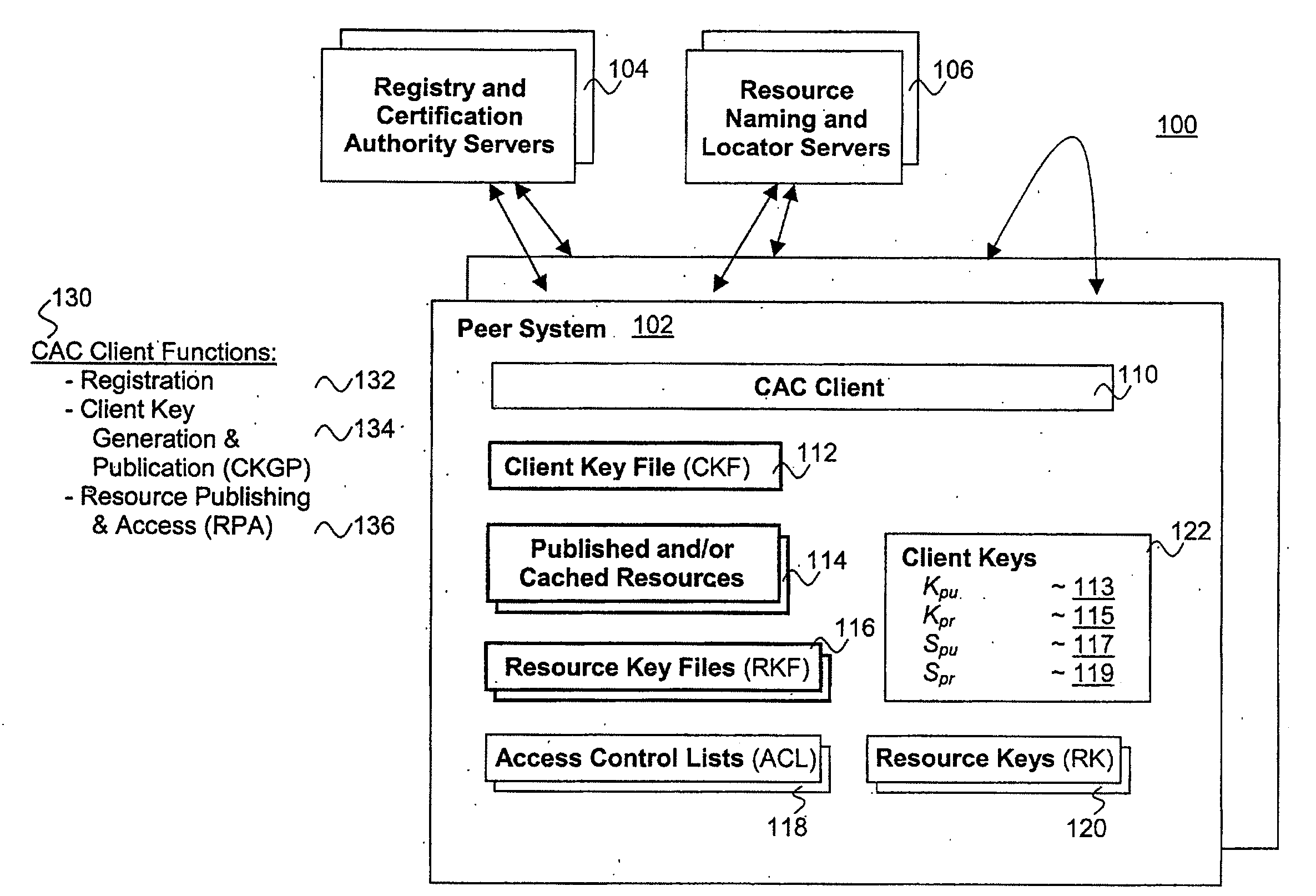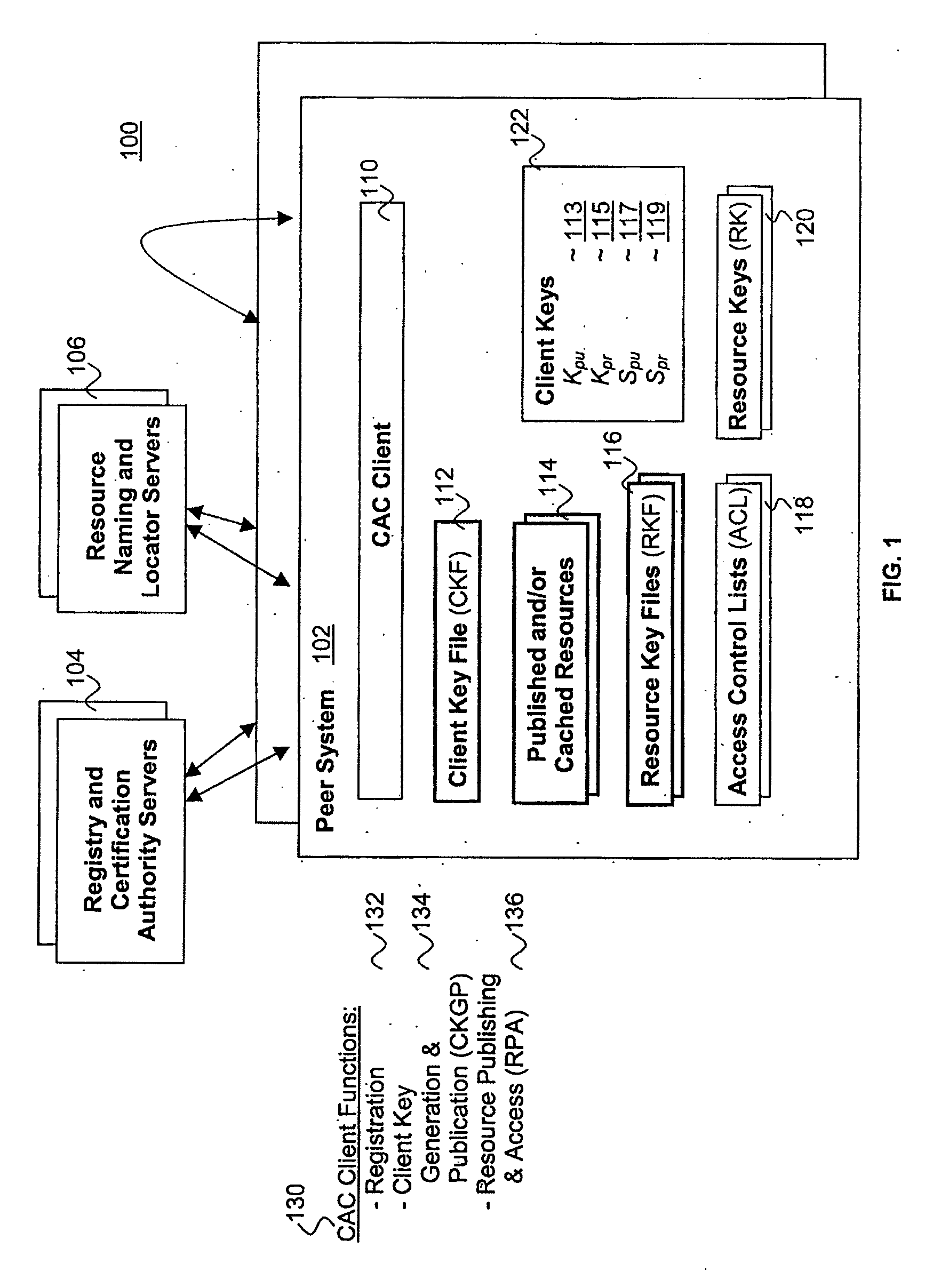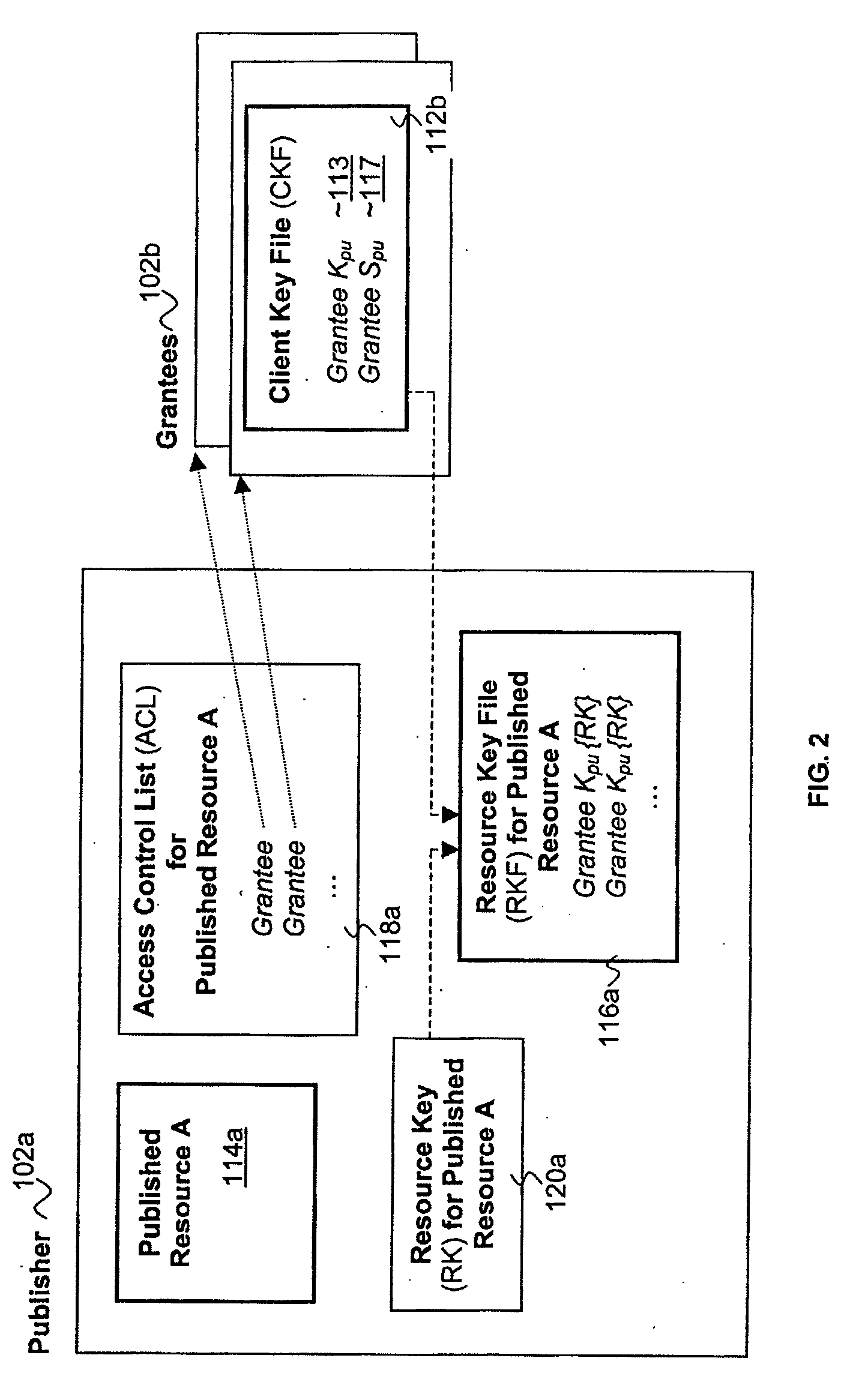Distributed scalable cryptographic access control
a cryptographic access control and distributed technology, applied in the field of distributed systems, can solve the problems of inability to distribute restricted content, lose the most of the efficiency benefits of peer-to-peer access control, and the traditional access control approach based on centralized authorities (such as directory servers), etc. authentication quickly becomes impractical and inefficient, and the effect of reducing the number of users
- Summary
- Abstract
- Description
- Claims
- Application Information
AI Technical Summary
Benefits of technology
Problems solved by technology
Method used
Image
Examples
Embodiment Construction
[0047]The present invention includes a distributed, scalable cryptographic based methodology for controlling access to published resources by peer systems. In the description to follow, various aspects of the present invention will be described. However, the present invention may be practiced with only some or all aspects of the present invention. For purposes of explanation, specific numbers, materials and configurations are set forth in order to provide a thorough understanding of the present invention. However, the present invention may be practiced without some of the specific details. In other instances, well known features are omitted or simplified in order not to obscure the present invention.
[0048]Parts of the description will be presented in terms of operations performed by a processor based device, using terms such as resources, data files, executables, directory, sub-directory, publishing, accessing, determining and so forth, consistent with the manner commonly employed b...
PUM
 Login to View More
Login to View More Abstract
Description
Claims
Application Information
 Login to View More
Login to View More - R&D
- Intellectual Property
- Life Sciences
- Materials
- Tech Scout
- Unparalleled Data Quality
- Higher Quality Content
- 60% Fewer Hallucinations
Browse by: Latest US Patents, China's latest patents, Technical Efficacy Thesaurus, Application Domain, Technology Topic, Popular Technical Reports.
© 2025 PatSnap. All rights reserved.Legal|Privacy policy|Modern Slavery Act Transparency Statement|Sitemap|About US| Contact US: help@patsnap.com



